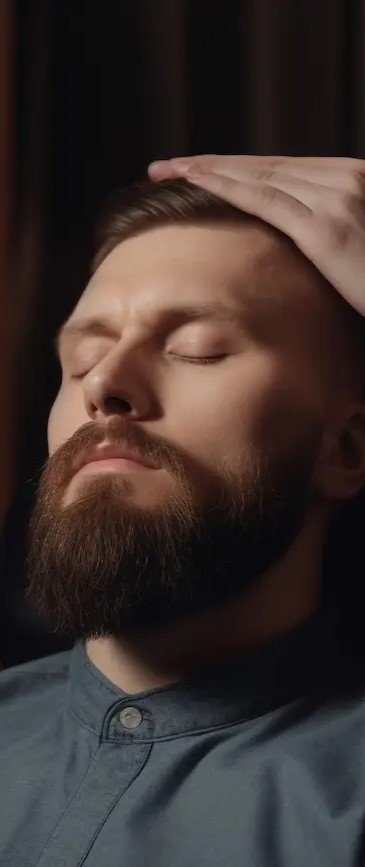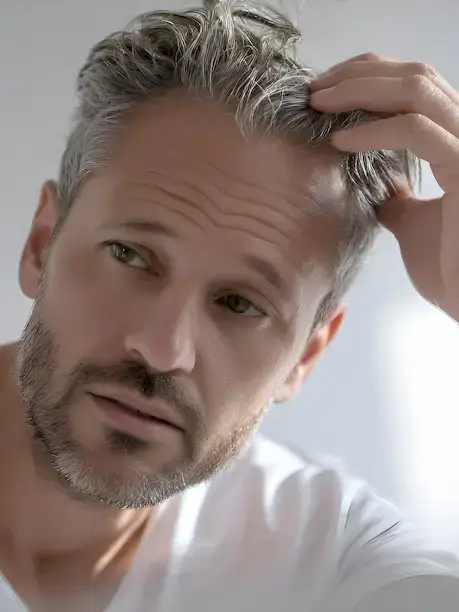Hair transplants aren’t your only option. Multiple non-surgical treatments have demonstrated effectiveness in clinical studies, offering hope for men seeking alternatives to surgical intervention.
FDA-Approved Medications
Minoxidil (Rogaine) Originally developed as a blood pressure medication, minoxidil’s hair growth benefits were discovered as a side effect. Applied topically twice daily, it can slow hair loss and promote regrowth in 60-80% of users.
How it works: Minoxidil widens blood vessels in the scalp, improving blood flow to hair follicles and extending the growth phase of the hair cycle.
Expected results: Visible improvement typically occurs after 4-6 months of consistent use. Results plateau after 12-18 months but maintenance requires continued application.
Finasteride (Propecia) This oral medication blocks the conversion of testosterone to DHT, the hormone primarily responsible for male pattern baldness.
Effectiveness: Clinical studies show finasteride stops hair loss in 90% of men and promotes regrowth in 65% of users after two years.
Considerations: Potential side effects include decreased libido and sexual dysfunction in 2-4% of users. Benefits reverse within 6-12 months of discontinuation.
Advanced Non-Surgical Options
Low-Level Laser Therapy (LLLT) FDA-cleared devices use red light wavelengths to stimulate cellular activity in hair follicles. Home devices include laser caps, helmets, and handheld units.
Clinical evidence: Studies show 20-30% improvement in hair density after 16-26 weeks of treatment. Best results occur when combined with other treatments.
Platelet-Rich Plasma (PRP) This treatment involves drawing your blood, concentrating the platelets, and injecting them into your scalp. Platelets contain growth factors that may stimulate hair follicles.
Treatment protocol: Typically requires 3-4 initial sessions spaced 4-6 weeks apart, followed by maintenance treatments every 6-12 months.
Results: Studies show 60-70% of patients experience increased hair density and reduced hair loss after 3-6 months.
Microneedling Also called dermarolling, this technique uses tiny needles to create micro-injuries in the scalp, potentially stimulating growth factors and improving absorption of topical treatments.
Research findings: When combined with minoxidil, microneedling showed superior results compared to minoxidil alone in multiple studies.
Natural and Alternative Approaches
Scalp Massage and Circulation Daily scalp massage can improve blood flow and reduce scalp tension. One study found daily 4-minute scalp massages resulted in increased hair thickness after 24 weeks.
Essential Oils Rosemary oil has shown comparable results to 2% minoxidil in clinical trials. Peppermint oil demonstrated superior hair growth promotion in animal studies.
Japanese Head Spa Treatments These comprehensive treatments combine scalp cleansing, massage, and circulation improvement. While not extensively studied for hair loss specifically, they address multiple factors that contribute to scalp health.
Nutritional Support Supplements containing biotin, saw palmetto, iron, and zinc may support hair health, particularly if deficiencies exist. However, supplements alone rarely reverse genetic hair loss.
Combination Therapy Benefits
Research consistently shows that combining treatments produces superior results to single interventions. Common effective combinations include:
- Minoxidil + microneedling
- Finasteride + minoxidil
- PRP + minoxidil
- LLLT + topical treatments
Setting Realistic Expectations
Non-surgical treatments work best for:
- Men in early stages of hair loss
- Those with diffuse thinning rather than complete baldness
- Patients committed to long-term treatment protocols
Timeline for results:
- 3-4 months: Reduced hair shedding
- 6-12 months: Visible improvement in density
- 12-24 months: Maximum results achieved
The key to success with non-surgical treatments is consistency, patience, and often combining multiple approaches under professional guidance.


